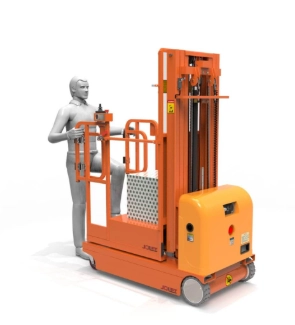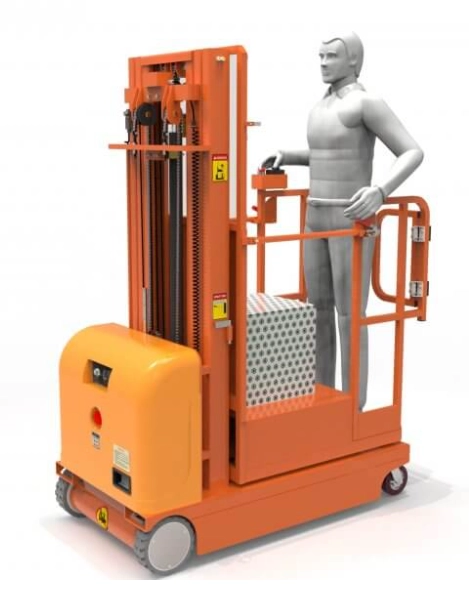Warehouse Accidents How Anti-Fall Devices Reduce Risk
In today’s warehouses, safety is always under the spotlight. Every day, heavy loads are lifted, stacked, and moved across narrow spaces. A small error, like a slippery step or a sudden equipment issue, can lead to serious trouble. Falls are one of the most common risks, and they often bring injuries, lost goods, and wasted time.
To fight this, companies are adding strong safety features to their lifting machines. Anti-fall devices are a clear example. They are designed to hold the platform steady even when something unexpected happens.
Hangzhou Jiequ Machinery Manufacturing Co., Ltd. is one company that builds machines with these features. Their AT Fully Electric Reclaimer combines smart design, safety upgrades, and flexibility. It includes overload alarms, electronic level gauges, and anti-fall systems that keep workers safe. Their wide product catalog fits supermarkets, warehouses, and logistics hubs. If you want more details, you can also check their contact page for quick help.
Why Are Warehouse Accidents a Big Concern?
Work in storage areas comes with higher risks than many expect. Large packages, tall racks, and fast schedules make accidents more likely if safety is ignored.
How Do Falls Usually Happen?
Most falls take place when workers use order pickers or lifts to reach items placed high up. A mast can stick due to poor grease or long use. A worker may stretch too far and lose balance. Guardrails that are not locked firmly may let cargo slip off. These small points combine into accidents that hurt both people and business.
What Problems Come After Equipment Failure?
When a platform drops without warning, it can cause severe injuries. Even if workers avoid harm, the goods may be damaged, leading to cost and delays. Downtime means orders are late, and customers may think twice about working with the warehouse again.
What Is the Role of Anti-Fall Devices?
Anti-fall devices are like hidden protectors. They stop a platform from dropping if the mast fails, adding a second layer of safety.
How Does the Anti-Fall System Work?
On the AT Fully Electric Reclaimer, the mast has a built-in lock that engages if it sticks halfway. Instead of falling, the platform freezes in place until the issue is fixed. This prevents sudden drops that could be fatal.
Why Are Electronic Features Added?
It’s not only about mechanical locks anymore. Modern equipment includes digital sensors. For instance, electronic level gauges keep the platform balanced even on uneven floors. Overload alarms alert the operator when weight limits are crossed. These signals reduce risk before it turns into an accident.
Are Safety Features Alone Enough?
Safety devices reduce risks, but they don’t replace good habits. Workers and managers also need to take responsibility.
What Should Operators Do?
Operators need training. They should know how to respond when alarms sound or when locks engage. They must also check rail locks, tubing, and steps before shifts begin. Ignoring an overload alarm may seem quicker in the moment, but it raises danger for everyone.
Why Does Maintenance Matter?
Even the best device needs care. Anti-fall systems require regular checks, such as cleaning, greasing, and part inspection. Machines designed with easy service points make this job simpler and keep downtime low.
How Do Anti-Fall Devices Help Daily Work?
Adding safety does more than protect workers. It also supports faster, smoother warehouse operations.
Why Is Worker Confidence So Important?
When workers trust their machines, they can focus fully on tasks. They move with more confidence and less hesitation. This increases overall speed, lowers stress, and creates a safer culture across the warehouse.
Can Safety Lower Costs?
Yes. One prevented accident may save thousands in repairs, claims, and delays. This makes investing in safer machines financially smart, not just protective.
What Makes the AT Fully Electric Reclaimer Stand Out?
The AT Fully Electric Reclaimer shows how safety and function can come together.
Which Features Add to Safety?
It has anti-fall devices to stop sudden drops. Overload alarms warn of misuse. Tubing is built with anti-explosion features to reduce hazards. Guardrails have locks to secure goods during lifts. Even the steps are made of checkered steel plates to cut the risk of slipping. Each feature answers a specific need from real warehouse life.
How Does It Balance Safety and Movement?
Safety does not mean heavy or clumsy. This reclaimer is compact and flexible. Its 360-degree steering allows smooth turns in narrow aisles. This makes it useful for busy warehouses where space is tight but safety is non-negotiable.
Conclusion
Accidents in warehouses bring both human and financial losses. Anti-fall devices and modern alarms are vital tools to reduce those risks. With the right training and upkeep, these systems keep people safe and help the job run without interruptions.
Hangzhou Jiequ Machinery Manufacturing Co., Ltd. is a supplier that proves safety can be part of smart design. Their AT Fully Electric Reclaimer is proof that secure and flexible equipment can go hand in hand. For any warehouse aiming to protect workers and maintain efficiency, machines with anti-fall devices should be the first choice.
FAQ
Q1: What does an anti-fall device do?
A: It prevents the platform from falling if the mast or system fails.
Q2: Why is an overload alarm key?
A: It warns operators when the platform carries more weight than safe limits.
Q3: Are anti-slip steps useful?
A: Yes. They reduce slipping risks when climbing or standing on the platform.
Q4: Can safety systems make work faster too?
A: Yes. Workers move more quickly when they feel safe and secure.
Q5: Why choose machines with anti-fall devices?
A: Because avoiding one major accident saves more money than the cost of safer equipment.

